Captain William Leefe Robinson, V.C.
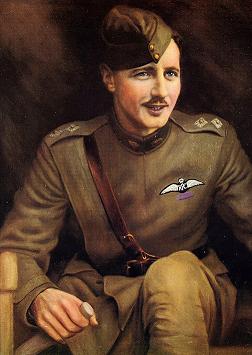 William Leefe Robinson the youngest of seven children, born at Tollidetta, South Coory, in Southern India on the 14th July 1895, son of Horace Robinson who had a coffee estate of Kaima Betta, in Pollibetta. His grandson of William Braham Robinson, R.N., Chief Naval Constructor at Portsmouth Dockyard.
William Leefe Robinson the youngest of seven children, born at Tollidetta, South Coory, in Southern India on the 14th July 1895, son of Horace Robinson who had a coffee estate of Kaima Betta, in Pollibetta. His grandson of William Braham Robinson, R.N., Chief Naval Constructor at Portsmouth Dockyard.
He enjoyed all the advantages that come to the seventh child of a close knit happy family. No doubt indulged a little by his parents, and egged on by adoring and delighted elder sisters, William's early years were full of fun. "He was always up to jokes and at lessons asking our governess the most awkward questions, especially scripture! He and his brother Harold were up to pranks in every way." Education was patchy, and clearly came a long way behind all other pursuits.
Early schooling included a year at the Dragon School, Oxford between 1901-1903, and four years at the Bishop Cotton School in Bangalore, before serious studies were commenced at St. Bees College, Cumbria, in September 1909. In a letter to his father he said "I find the lessons a little hard, but Harold can do them alright and is third to the top of the form" (Harold was his elder brother).
There are many references to academic failures, and only a few references to success. This clearly bothered William sometimes, in a note to his mother he said;
"I often wonder if I will make a mess of my life—in the way of failing exams I mean—but you mustn't be too hard on me if I do old mother dear, and remember that I will be competing with boys who will have had 9 and 10 years good sound schooling, and I will have had barely five." No doubt many young men were worrying about their academic performance during 1913. A year later such concerns would be forgotten.
Outside the classroom William had no such fears. At sports he tried hard, won his house cap for football, played hockey, enjoyed sculling, and seems to have taken every opportunity to get out of doors. A holiday in Russia in 1912 with the Baroness von der Recke was such a success that it was allowed to extend into the first three weeks of the autumn term. Then there were trips to the theatre, boating parties, an ever growing circle of young ladies, and finally, the OTC in which he obtained the rank of Sergeant.
William at last began to plan how he could turn his energies to good use. In January 1913, he wrote to his mother "This is mother dear, my rough plan for the future. These holidays spent at Bournemouth. It wouldn't be very much more expensive would it. Next holidays—Summer—to be spent with Kitty if possible in France, swotting French. I do hope this can be managed. Then nothing particular till about April 1914 when I ought to leave school and have a private coach. I may share one with some other fellow, so as to reduce expenses—for about six months, on and off, with a few holidays now and then. If I am given this chance I somehow — although I know nothing now—feel sure I will pass in the RE's; if I do, well and good if not I think the best plan is for me to try again (f I only just failed), or (if I passed badly in maths) to try Sandhurst, and get, if I can, into the Indian army, then, if I don't find the Indian climate agrees with me, I could either get into the English army, or if luck smiled upon me, and I made a few influential friends, I would go—or have a good try to go—into the Egyptian army."
The letter breathes with enthusiasm. With all the confidence of untried youth, William was planning his own destiny.
The story of William Leefe Robinson (1914-18)
 |
As 1914 approached, the Robinson family was busy planning for a future that never came. Two of the girls married, Grace to her cousin Arthur Linell Robinson, who later worked in West Africa as a mining engineer, and Ruth, who had stayed in India, to John Irwin who ran the Jumboor Coffee estate in North Coorg. Harold passed his final exams and returned to India, to manage a tea estate, while Kitty was tempted to return to Russia where she had so enjoyed her time as a governess with Baroness von der Recke. William applied himself to his self appointed task of entering the army, and succeeded. His last year at St Bees, no longer in the shadow of his elder brother Harold, was probably his best. He was appointed head of Eaglesfield House, and as a Sergeant in the OTC he had his first experience of army life at the large 'camp' which took place at Mytchett in Kent. |
In March 1915, Robinson put in for a transfer to the Royal Flying Corps. The fledgling corps needed all the men it could get, and the request was immediately answered. On 29th March 1915 he was posted to No. 4 Squadron at St. Omer, under Major C.A. Loncroft, flying BE2cs in reconnaissance patrols over the German lines, and in the second week of April was made "efficient" and put on full pay. The work was exacting, calling for accuracy, and not without danger. CLICK HERE OR THE IMAGE TO READ MORE |
 |
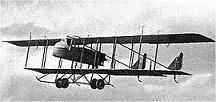 |
After recovering from his shrapnel wounds and a months leave, Robinson reported at Farnborough on the 29th June 1915. The next day he was making his first flight under instruction. On 18th July he survived his first solo flight. On 28th July he qualified for his Royal Aero Club Certificate No. 1475 in a Maurice Farman. He had had a total of 230 minutes tuition. On 14th August he reported to the Central Flying School at Upavon for a course of advanced instruction. On the 15th September he gained his "wings." CLICK HERE OR THE IMAGE TO READ MORE |
On the 2nd February 1916, Robinson was transferred to Sutton's Farm at Hornchurch. Part of 19th Reserve Squadron under Major T. C. Higgins, the 'station' was in reality a field. Under Major Higgins, the Home Defence Squadrons were gradually being organised. From the humble beginnings of "two machines kept in tents" 19 Squadron, later 39 Squadron, was to grow to 18 aircraft, in three flights. By July 1916, the squadron, under Major A. H. Morton, was made up of "A" flight under Captain L. S. Ross at Hounslow, "B" flight at Sutton's Farm under Robinson, and "C" flight at Hainault Farm under 2nd Lieutenant A. de B. Brandon. Wooden hangers replaced the tents. The BE2cs were fitted out with more useful night flying aids. CLICK HERE OR THE IMAGE TO READ MORE |
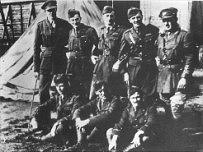 |
 |
On the afternoon of the 2nd September 1916, sixteen airships, twelve from the German Naval Airship Division and four from the Army Division, set out for England on what was to be the biggest air raid of the war. The vessels were carrying a total load of 32 tons of bombs. At approximately 23.00 hours the Home Defence squadrons were put on alert. Radio messages from the airships had been intercepted, and a welcoming party was prepared. Half an hour later SL11 was wreaking destruction over North London. Robinson attracted by the commotion over Ponder's End and Enfield Highway, headed for what he presumed must be another airship, the SL11. Robinson flew alongside and riddled its entire length with bullets. |
For shooting down the SL11 airship, Robinson now the most famous pilot in the country could not go without official recognition for long. On Monday the 4th September 1916, Lieutenant General Henderson recommend Lieut. W. L. Robinson for the Victoria Cross for the most conspicuous gallantry displayed in this successful attack. On the 5th September 1916, the London Gazette announced the award. The investiture at Windsor Castle on Friday 9th September 1916 was an occasion for more crowds. Though he arrived late, Robinson found hundreds of people waiting to catch a glimpse of him entering and leaving the castle. He would have to face many such crowds in the months ahead. |
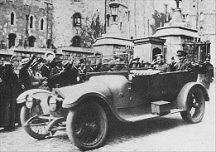 |
 |
Robinson was not experienced in the new fighter tactics being evolved over the Western Front at this time and was totally unprepared for a clash with Germany's most famous and successful flying ace the "Red Baron". On the 5th April 1917, Robinson's plane was brought down near Mericourt, and both he and his observer Lieut. Edward Warburton were immediately captured. They were held for a few days in Karlsruhe, and then transferred to the prisoner-of-war camp in Freiberg-in-Breisgau. Robinson made several attempts to escape but without success. After four attempts in as many months, Robinson's reputation as a troublesome charge was growing. After several camps he ended up at Holzminden. |
Robinson survived the war, but was weakened by this treatment in the POW camps. He returned to England on 14th December 1918, a sick man. He was given two months leave, and planned to spend Christmas with some friends the Cliftons at Harold Weald in Middlesex. It was there that he contracted influenza. His health failed rapidly. His sister Kitty, now Baroness Heyking, and his patient fiancé Joan, nursed him as best they could but he no longer had the strength to fight his illness. He died on 31th December 1918. England mourned the passing of one of the war's most popular heroes and hundreds attended the funeral which took place at Harrow Weald on Friday 3rd January 1919. |
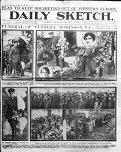 |
 |
After the death of Captain William Leefe Robinson, V.C. his Victoria Cross was passed on to his sister Katherine Baroness Heyking and after her death was passed on to her daughter Regina (Mrs. Regina G. Libin). Strangely, his other Great War medals were in the hands of another private individual (Roy Bartlett). On the 22nd November 1988 all the medals and other memorabilia were brought together at Christie's in London. Mrs. Regina G. Libin, Robinson's niece, auctioned all the medals and memorabilia and raised £99,000 on behalf of 'A Medal for Life' a charitable trust to benefit Children suffering from Leukaemia. |
